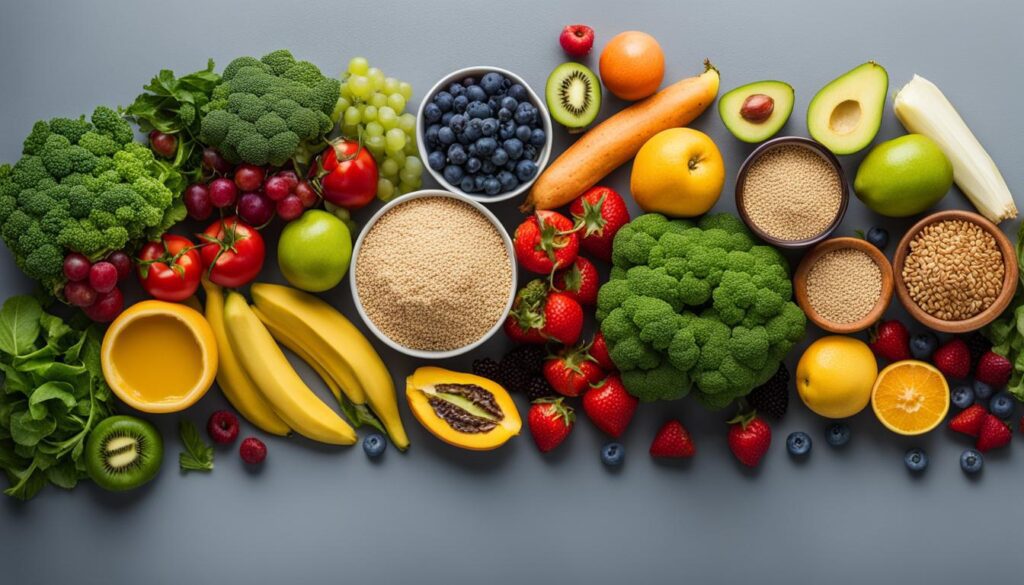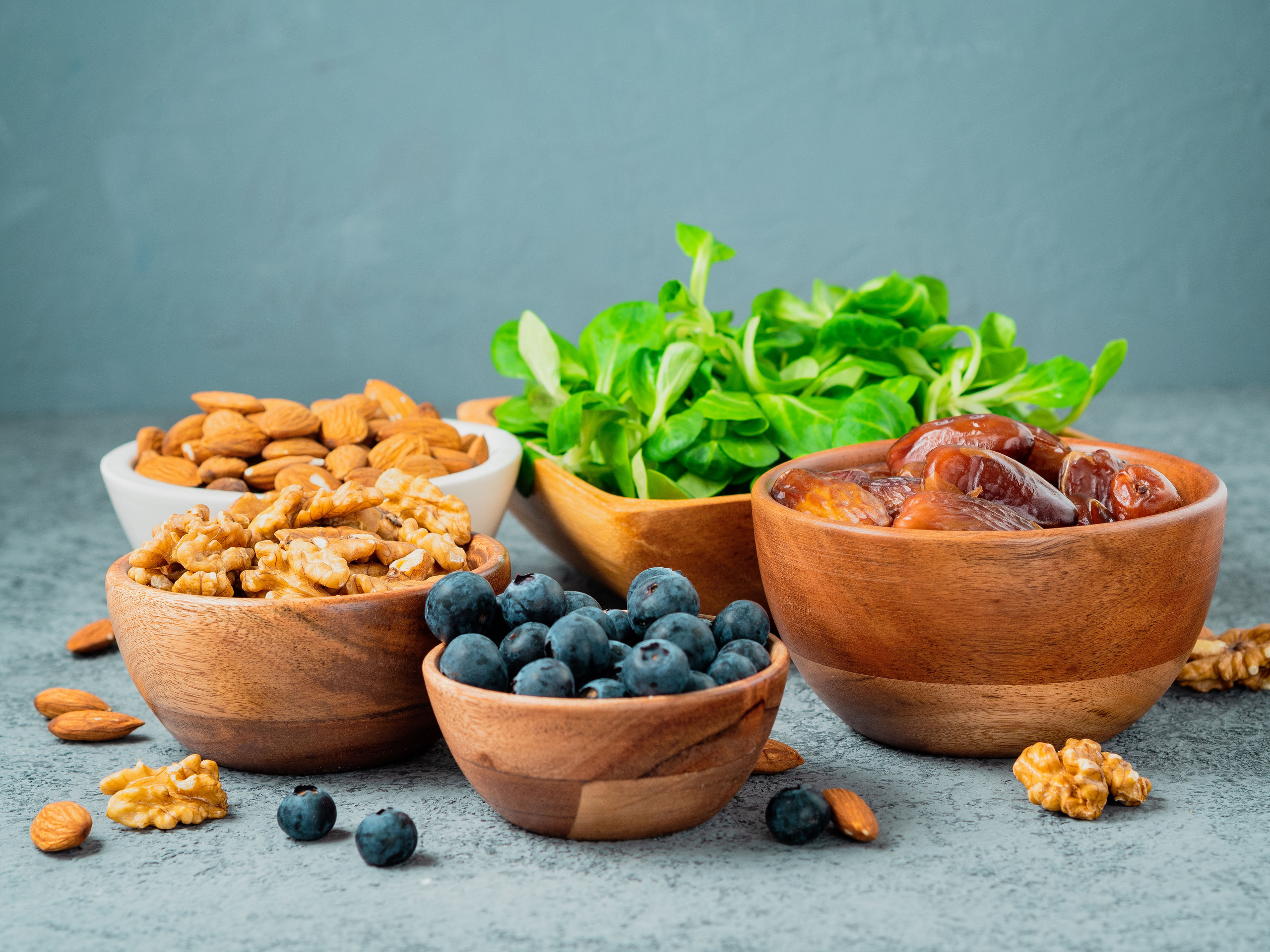Embarking on a weight loss journey can seem daunting, but the key to success lies in embracing healthy weight loss tips that promote sustainable change. Whether you’re looking at natural weight loss methods or effective weight loss strategies, the foundation of a healthier you is built on consistency and an understanding of sustainable weight loss techniques. Let’s push past the quick fixes and set the stage for long-lasting well-being.
Key Takeaways
- Adopt natural weight loss methods that enhance your overall health, not just your waistline.
- Effective weight loss is a marathon, not a sprint; gradual changes yield sustainable results.
- Learn to integrate healthy weight loss tips into your daily routine for long-term success.
- Utilize sustainable weight loss techniques that align with your lifestyle and preferences.
- Remember that effective weight loss strategies are those you can stick with over time.
Understanding Your Weight Loss Journey
Embarking on a weight loss journey can be both exciting and daunting. It becomes crucial to understand the multifaceted aspects that contribute to weight gain, as well as the strategies that pave the way toward a healthier lifestyle. Tackling obesity factors head-on, integrating more physical activity for weight loss, and embracing healthy eating habits are the pillars for sustainable change.
Factors Contributing to Weight
Obesity isn’t simply about overindulgence; rather, it’s influenced by an array of environmental and lifestyle factors. The ubiquity of processed foods high in fats, sugars, and sodium, combined with larger portion sizes, set the stage for serious weight-related issues. Moreover, modern life promotes sedentariness, especially as remote work reduces the necessity for physical activity. These obesity factors form a challenging backdrop against which you must navigate.
Assessing Lifestyle Changes for Better Health
To counteract these tendencies, it’s important for you to take a critical look at your daily habits. Through maintaining a detailed diary of your food and beverage intake or utilizing tracking apps, you gain valuable insight into your dietary patterns. This data becomes the foundation upon which you can begin to lay out a plan for adopting more physical activity for weight loss and integrating healthy eating habits into your daily routine.
“The first step to change is awareness. The second step is acceptance.” – Nathaniel Branden
As you assess, accept, and implement lifestyle changes, remember that each small step contributes to a healthier you. Let’s embark on this journey thoughtfully, setting realistic goals and forging a path toward better health through mindful choices and informed changes.
Realistic Goal Setting for Weight Loss
Embarking on a weight loss journey begins with the fundamental step of determining how to set a weight loss target that remains attainable and conducive to your overall health. While striving for a healthy weight, shifting your focus toward meaningful, incremental milestones can significantly boost your long-term success. The notion of losing weight can often seem daunting, but breaking down the process into smaller goals makes the challenge appear more manageable and less overwhelming.

Effective portion control for weight management is key, and it doesn’t call for drastic measures. Consider introducing moderate changes that you can adhere to consistently, such as using smaller plates or checking serving sizes with measuring cups. It’s not about depriving yourself; it’s about creating a sustainable pattern of eating that supports your weight loss and maintenance goals. Below is a simple table to guide you in understanding portion sizes:
| Food Group | Recommended Portion Size | Notes |
|---|---|---|
| Vegetables | 1 cup | Aim for a variety of colors |
| Proteins | 3-4 ounces | Choose lean options like chicken or fish |
| Whole Grains | 1/2 cup cooked | Includes rice, pasta, or quinoa |
| Fruits | 1 medium fruit or 1/2 cup chopped | Fresh is best, but frozen works too |
As you progress, adjusting your targets can help in keeping you motivated. Celebrate the small victories, like better-fitting clothes or more energy, which are just as important as numbers on a scale. Remember, the journey to a healthy weight is not a sprint but a marathon, and by setting and achieving incremental goals, you’ll build the endurance needed to cross the finish line.
- Start with a clear and measurable target, like losing 5% of your current weight.
- Establish a timeline that feels realistic—for example, 1 to 2 pounds per week.
- Implement portion control techniques to help manage calorie intake without feeling restricted.
- Track your progress, but also pay attention to how you feel and how your clothes fit.
- Adjust your goals as needed to stay motivated and on track towards a healthy weight.
The Role of Balanced Diets in Effective Weight Loss
Embarking on a weight loss journey can be significantly bolstered by the food choices you make daily. It’s not just about reducing calories but choosing meals that are both satisfying and nourishing. Eating a balanced diet intertwines with crafting nutritious meal plans and developing healthy eating habits to forge a path towards sustainable weight management.
Choosing Nutrient-Rich Foods Over Empty Calories
In the canvas of meal choices, opting for foods dense in nutrients rather than “empty calories” can make all the difference. These are the choices that pack vitamins, minerals, and other beneficial compounds into each calorie, providing a dual benefit of nourishment while maintaining a calorie budget.

Understanding the Importance of Whole Foods
Whole foods are the cornerstone of a healthful diet, virtually untouched by processing and rich in their natural state. They provide complex nutrition that our bodies can use more efficiently. Focusing on whole foods means you’ll be consuming foods low in added sugars and unhealthy fats, and high in fiber, essential for a well-functioning digestive system.
Remember, healthy eating is a marathon, not a sprint. It’s about making better choices, one meal at a time.
Consider integrating the following wholesome selections into your diet to enhance satiety and supply vital nutrients:
- Lean proteins such as chicken or plant-based alternatives like lentils and beans.
- A variety of colorful vegetables to ensure a wide range of vitamins and minerals.
- Whole grains like quinoa and brown rice for sustained energy.
- Healthy fats, including avocados and nuts, for their nutrient profiles and to promote fullness.
By focusing on these integral elements, you can construct a balanced plate at every meal. In doing so, you will not only stride towards weight loss but also pave the way for long-lasting health benefits. Let this be the foundation from which your healthy eating habits grow.
Physical Activity for Sustainable Weight Management
As you explore ways to shed pounds and maintain a healthy weight, consider that physical activity for weight loss isn’t just a one-time affair; it’s part of a continuous lifestyle that you craft for yourself. A blend of increased activity and dietary modifications not only contributes to weight loss but also enhances your overall well-being.
To kickstart your journey, aim for at least 150 minutes of moderate exercise each week. This could be anything that gets your heart pumping – from brisk walking to cycling to dancing. Remember, the primary aim is to find activities that you genuinely enjoy, because when you’re having fun, you’re more likely to stay consistent:
- Take a scenic hike and connect with nature.
- Join a social sports league and combine fitness with friendly competition.
- Try a new fitness class and keep things fresh and exciting.
While the focus is on burning calories, your body also needs proper hydration to function efficiently, especially during exercise. The directive to drink more water for weight loss is not just about keeping you quenched. Water helps in metabolizing fat and also acts as a natural appetite suppressant, aiding in reducing calorie intake.
Incorporate these tips into your daily routine for a holistic approach to weight loss:
- Carry a water bottle and take regular sips throughout your activities.
- Begin your meals with a glass of water to help control portion sizes.
- Switch out sugary beverages with water infused with slices of fruit for a refreshing twist.
Let’s look at a comparative table to see how different levels of exercises, along with hydration, can impact your weight loss journey:
| Activity Level | Weekly Exercise Time | Caloric Burn* | Hydration Advice |
|---|---|---|---|
| Light | 75-150 minutes | 200-400 calories | At least 1.5 liters daily |
| Moderate | 150-300 minutes | 400-800 calories | 2 to 3 liters daily |
| Intense | 300+ minutes | 800+ calories | 3+ liters daily, adjust for sweat loss |
*Caloric burn rates are approximations and can vary based on individual weight, metabolism, and intensity of exercises.
Finding the right balance between caloric intake, physical activity, and hydration is key in achieving and sustaining your weight loss goals. As you embark on this journey, remember that it’s not just about the number on the scale, but building a healthier, more active lifestyle. So lace up your sneakers, fill up your water bottle, and embrace the path towards a fitter, happier you.
Integrating Portion Control into Daily Meals
As you embark on your weight loss journey, understanding the subtleties of portion control for weight management can be the linchpin for success. The key lies not just in the foods you choose, but how much you consume. Being mindful of the portion sizes that make up your meals plays a critical role. When portions are in check, you’re better positioned to recognize hunger and fullness cues, leading to mindful eating for weight loss.

The Impact of Serving Sizes on Weight Control
Your plate can be a powerful tool in managing your caloric intake. By simply adjusting the serving sizes, you can significantly affect your weight control efforts. Ever noticed how larger plates lead to larger servings? It’s not just your imagination–it’s a well-documented fact that could make or break your diet.
Tools and Tips for Measuring Portions
- Invest in kitchen scales or measuring cups to accurately portion your food.
- Use your hand as a guide: a clenched fist for carbohydrates, palm-size for proteins, thumb for fats, and open hand for veggies.
- At restaurants, consider splitting a dish with a friend, or immediately boxing half for later.
- Visualize your ideal plate: fill half with vegetables, one quarter with lean protein, and the rest with whole grains and healthy fats.
- Take time to chew and savor your food, allowing your body to register fullness, preventing overindulgence.
Adopting these strategies will not only promote weight management but also increase your satisfaction and enjoyment of meals. Remember, portion control is about balance and being attuned to your body’s needs. Embrace it, and watch as the transformation unfolds, both on the scale and in your overall well-being.
Hydration and Its Effect on Weight Loss
Embarking on your weight loss journey, have you considered the role hydration plays? It turns out that the simple act to drink more water for weight loss is not just a good habit—it’s a strategic move. In this section, we’ll dive into why water is essential for managing your weight and discuss healthy alternatives to high-calorie beverages that can help keep your caloric intake in check.
Benefits of Drinking Water for Reducing Hunger
Feeling hungry? Reach for a glass of water before you snack. Drinking water can act as an appetite suppressant, filling your stomach and signaling to your brain that you’re more full than you thought. By staying hydrated, you’re less likely to misinterpret thirst for hunger and overeat. This is a particularly effective strategy when you’re aiming to drink more water for weight loss.
Research shows that drinking water prior to meals leads to an average reduction in intake of 75 calories per meal. That’s 27,000 calories a year, which equates to roughly eight pounds of fat!
Healthy Alternatives to High-Calorie Beverages
Quenching your thirst doesn’t have to include sugary drinks that contribute empty calories. Instead, opt for healthy alternatives to high-calorie beverages and watch the weight-related benefits that can follow. Whether it’s infused water or unsweetened tea, swapping out high-sugar options can significantly reduce your calorie intake without sacrificing satisfaction.
| Beverage | Calories per 12 oz | Healthy Alternative | Calories Saved |
|---|---|---|---|
| Soda | 150 | Sparkling water with lemon | 150 |
| Fruit Juice | 180 | Cold-pressed vegetable juice | 130 |
| Sweetened Iced Tea | 90 | Herbal tea with mint | 90 |
| Energy Drink | 110 | Black coffee or green tea | 110 |
- For a flavorful twist, add slices of fruits like orange, strawberries, or cucumber to your water.
- Herbal teas are a calorie-free way to keep your palate pleased and your body hydrated.
- Black coffee in moderation can be a healthy alternative as well, sans the added sugar and cream.
Remember, making small changes can lead to big results. By choosing water and other low-calorie refreshments over calorie-laden beverages, you can ease your way towards a healthier weight—and keep it off. So next time you’re about to reach for a can of soda, pause and consider the positive impact your choice of beverage has on your weight loss goals.
Healthy Weight Loss Tips: A Comprehensive Approach
When you embark on a journey to shed pounds, it’s crucial to utilize sustainable weight loss techniques that align with your lifestyle and nutritional needs. Let’s explore an effective weight loss strategy that encompasses all aspects of a well-rounded regimen. After all, no one diet fits all, and understanding how to create a caloric deficit through various diets like Mediterranean, vegetarian, or keto, is just a fraction of what it takes to ensure long-lasting results.
By integrating a mix of manageable physical activities and being mindful of what you eat, you set the stage for effective weight loss strategies that support enduring success. Let’s break down some actionable tips to maintain a balanced caloric budget while promoting overall health and wellness:
- Chart your food intake and physical activity levels to gain insight into your lifestyle habits.
- Steer clear of drastic diets that promise quick results without considering the importance of calorie control.
- Make gradual changes towards healthful living, like substituting a portion of your commute with walking or cycling.
- Choose nutrient-rich foods that keep you satiated and energy-stable throughout the day.
Furthermore, the following table outlines some foundational steps to take when sculpting an effective approach to weight loss:
| Action Step | Goal | Tip |
|---|---|---|
| Assess Your Diet | Establish Nutritional Balance | Use apps or journals to track your eating patterns and adjust for a well-rounded diet. |
| Calculate Your Needs | Define Caloric Deficit | Utilize online calculators or consult a dietitian to personalize your caloric goals. |
| Embrace Activity | Increase Daily Movement | Incorporate enjoyable, consistent physical activities into your routine. |
| Monitor Progress | Track Changes and Adapt | Keep a record of your milestones and be ready to tweak your plan for better results. |
If you aim for progress, not perfection, you’ll find your stride in developing habits that lead to a healthier you. Remember, it’s the consistent, mindful choices that pave the way for successful, sustainable weight loss techniques.
Creating a Sustainable, Nutritious Meal Plan
Achieving your weight loss goals can be a delightful journey rather than a chore, courtesy of a nutritious meal plan that is as delicious as it is healthy. With thoughtful preparation and a dash of creativity, your diet can be packed with flavors that foster sustained weight management and embody mindful eating for weight loss. Let’s explore how you can chart the course for your nutritional voyage.
Planning for Success with Meal Prepping
Embarking on the path of nutritious meal planning requires strategy and foresight. Meal prepping is the lifesaver that keeps you afloat amidst the tempest of busy schedules and dietary temptations. Reserve a block of time each week to prepare your meals—grill chicken breasts, steam an assortment of veggies, cook a large batch of quinoa or whole wheat pasta. Portion these out into containers, and you’ve got yourself a week’s worth of lunches and dinners. This practice simplifies daily decision-making, helping you adhere to mindful eating for weight loss.
Including Variety to Prevent Diet Fatigue
No one enjoys a monotonous diet. It’s the spice of life that keeps us enchanted with our eating habits. Challenge yourself to try new recipes, incorporate seasonal produce, or switch up the spices in familiar dishes. Each meal should be an exploration of taste and nutrition; by doing so, you invite excitement to the dining table and ensure that your healthy eating plan remains a pleasure, not a punishment.
Consider the colorful variety that each food group offers and make it a point to include them in your meals:
- Lean proteins such as grilled fish, tofu, and legumes
- A rainbow of fruits and vegetables to ensure a wide range of vitamins and minerals
- Whole grains like brown rice, barley, and whole wheat bread for fiber and energy
- Low-fat dairy or dairy alternatives for calcium and protein
Remember, when it comes to weight loss, every bite you take is a step towards a healthier you. Make those steps count with meals that nourish your body and delight your palate.
Conclusion
Embarking on the journey to achieve a healthy weight is commendable, and your dedication to seeking out healthy weight loss tips is the first step towards success. Sustainable progress hinges on natural weight loss methods that encompass a holistic approach to lifestyle change. Remember, this is not a race but a marathon, where small, consistent strides build the foundation for a transformative and healthier you. By setting attainable goals and creating a supportive environment for yourself, you not only catalyze weight loss but also ensure its maintenance for years to come.
Regular physical activity and portion control are the pillars supporting your weight loss architecture, erected upon the steadfast base of a balanced, nutritious diet and adequate hydration. As you navigate through the twists and turns of your weight loss route, it’s crucial to remain patient and resilient. Leveraging communal support systems and practicing mindful eating strategies are worthwhile tools in your arsenal, aiding you in overcoming hurdles that may appear during your journey.
Focusing on health over haste leads to enduring outcomes, enabling you to relish a rewarding lifestyle that goes beyond numbers on a scale. Remember—each choice you make is a building block towards a healthier you, so cherish each decision and recognize the power it holds. Your dedication to cultivating beneficial habits is a testament to your commitment to not just weight loss, but also to increased vitality and well-being. Forge ahead with determination, and let the culmination of your efforts reflect a balanced and gratified life.
FAQ
What are the primary factors contributing to weight gain?
The rise in obesity can be attributed to a complex mix of factors such as the high availability of processed food rich in fat, sugar, and salt, larger portion sizes, and an increasingly sedentary lifestyle marked by less physical activity in both work and leisure activities.
How can I make effective lifestyle changes to improve my health?
Start by recognizing the habits and environmental conditions that may contribute to weight gain. Keeping a food diary, tracking dietary habits through apps, and setting small, actionable health goals like incorporating more physical activity into your routine can help facilitate healthier lifestyle choices.
How do I set a realistic weight loss target?
Decide upon a weight loss goal that’s healthy and attainable, using tools like BMI calculators for guidance. Aiming to lose a smaller percentage of your body weight at a time can help you achieve significant health improvements and encourage you to continue with your efforts.
Why is it important to choose nutrient-rich foods over empty calories?
Opting for foods high in nutrients rather than those with empty calories is crucial because it helps ensure that your body receives the vitamins, minerals, and other nutrients it needs without excessive calorie intake. This balance contributes to overall health and assists in weight management.
What role do whole foods play in a balanced diet?
Whole foods, which are minimally processed, provide essential nutrients like fiber, vitamins, and antioxidants. They are fundamental for a balanced diet as they contribute to satiety, help regulate blood sugar levels, and reduce the risk of chronic diseases, supporting effective weight loss.
How important is physical activity for weight loss and management?
Extremely important. Regular physical activity, in combination with dietary changes, has been shown to be more effective in managing weight than diet alone. Strive for at least 150 minutes of moderate exercise per week and find activities that you enjoy to help sustain these habits long-term.
What is the impact of serving sizes on weight control?
Understanding and managing serving sizes is pivotal for controlling caloric intake. Overestimating portion sizes can lead to unnecessary calorie consumption, making it challenging to manage weight effectively.
Can you provide tools or tips for measuring food portions?
Absolutely. Using measuring cups, spoons, food scales, and even visual cues like comparing servings to everyday objects can help you accurately gauge portion sizes. Also, filling half of your plate with vegetables, and the remaining half with a combination of proteins, grains, and healthy fats, can help you keep portions in check.
What are the benefits of drinking more water for weight loss?
Drinking water can help reduce hunger, aid in digestion, and replace high-calorie beverages that contribute extra sugar and calories to the diet. Staying hydrated is a simple yet effective strategy for supporting weight loss efforts.
What are some healthy alternatives to high-calorie beverages?
Healthy alternatives include water flavored with natural fruit, herbal teas without sugar, black coffee, and other low-calorie drinks. These options can help you stay hydrated without adding excess calories to your diet.
How do I create a comprehensive approach to weight loss?
A comprehensive approach involves examining your calorie intake, increasing your activity levels, and developing sustainable eating habits. Utilizing resources like calorie-deficit calculators or resting metabolic rate (RMR) testing can provide personalized guidelines for your nutritional needs.
What does planning for success with meal prepping involve?
Planning for success means prioritizing meal preparation, which helps resist the temptation of less healthy options and reinforces the commitment to eating a balanced diet. It involves preparing meals in advance, which are portion-controlled and nutritionally balanced to support your weight loss goals.
How can I include variety in my diet to prevent diet fatigue?
To avoid monotony in your diet, try incorporating different foods and flavors. Experiment with new recipes that include diverse ingredients, and don’t be afraid to try various cooking methods to keep your meals interesting and satisfying.





